Matthew Augustine, GPHR, REBC, CEO of Hanna Global Solutions, a UBA Partner Firm
The above title of a Harvard Business Review (HBR) article1 caught my eye. The author was commenting on a number of recent books that addressed the issue of technologies putting people out of work. The article began with  an 1867 quote from Karl Marx that went like this: “History discloses no tragedy more horrible than the gradual extinction of the English handloom weavers by the rapid and persistent progress of machinery.” Referring to this situation with the 19th century weavers, James Bessen, in his book Learning by Doing, noted that as humans work with new technologies over the long term, they improve them and boost their own fortunes in the process. Wages of weavers remained flat for a decade, but from 1860 to 1890, weavers’ pay more than doubled.
an 1867 quote from Karl Marx that went like this: “History discloses no tragedy more horrible than the gradual extinction of the English handloom weavers by the rapid and persistent progress of machinery.” Referring to this situation with the 19th century weavers, James Bessen, in his book Learning by Doing, noted that as humans work with new technologies over the long term, they improve them and boost their own fortunes in the process. Wages of weavers remained flat for a decade, but from 1860 to 1890, weavers’ pay more than doubled.
What does this mean for employee benefits technologies? I see it as the power loom of the 20th century benefits industry. Another book referenced in the HBR article is Zero to One by PayPal founder Peter Thiel. His message is that technology is a complement to labor, not a replacement. Clearly, that is the case with employee benefits technology. It doesn’t replace what humans do, but it complements and empowers humans. Technology does what humans could not do. Think about data analytics, accurate high volume transactions and accurate, speedy management of complexity.
With new technology, there’s always the risk of some people considering it like some new toy, and trying to solve everything with technology without application of labor – and more importantly human wisdom and judgment. In order to get the most out of technology as a complement to human effort, there is a required change in the way of doing things. If you just apply technology blindly, you will end up automating inefficient processes and what you get is faster and more of the “wrong” thing. You don’t get the real scalability and benefit from technology if you don’t standardize and streamline some of the work you currently do before applying technology.
You don’t get scalability and efficiency if your data is not standardized. As long as you managed enrollments on paper and entered information manually into a carrier system, you could handle any type of variations – in plan designs, in rate structures, in eligibility rules, in the format of data to be entered. And this could vary from group to group as all it required was filling out a variation of a form for each group, and application of rules was done by the person reviewing the form, explaining to an employee sitting across the desk what the rules are, or getting all enrollments done at a town hall enrollment meeting where you answered all doubts and questions.
If you want to move to use of an online enrollment system, you have to review these complex ad-hoc eligibility rules, plan structures, rate structures, and question the benefit of making them non-standard compared to aligning them with more standard, simpler options and getting the benefit of faster turnaround times, more accurate data management and better data analytics. When things are manual, there are practically no constraints – if you want to go faster, you have to accept some guidelines. Much like choosing to drive on freeways with their lane discipline and on/off ramps as opposed to walking through fields and jumping over fences to get somewhere.
The enrollment process for voluntary and individually purchased plans is one of the areas where benefits technology complements and empowers labor exponentially. Technology doesn’t “replace” good advisors – it allows good advisors to access a broader audience without constraints of geography or time. It just changes the medium of communication from enrollment meetings and town halls, to webinars, from enrolling on forms with an advisor across the desk or kitchen table, to self-service enrollment on websites with videos, avatars, and call center agents responding to a call back button. The skills, wisdom and knowledge of the advisor is still required, but is made more accessible to more people. This results in higher adoption of these plans, more revenues to the firm, and increased compensation to the advisors – with less effort and time.
1 Frick, Walter, “Technology Doesn’t Always Beat Labor.” Harvard Business Review. March 2015
https://hbr.org/2015/03/technology-doesnt-always-beat-labor-3




